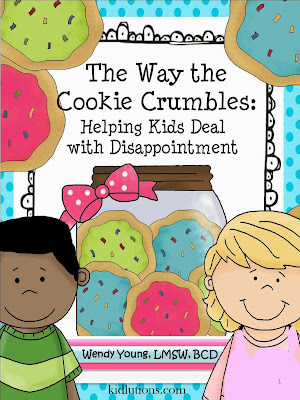Raising Kids with Grit, Tenacity, Persistence and
Fortitude
Grit, tenacity, persistence and
fortitude. No matter what you call it, it's the ability to push past
disappointment, feelings of upset, adversity and other brick walls that stand
between where we are and where we wish to be.
We’ve all tried to instill it in
kids for years and the importance of all of this has been reinforced by the
research of both Carol Dweck and Angela Lee Duckworth.
A Mindset of Persistence and Growth: The Long Haul
Raising kids to espouse a mindset that embraces the ability to persist is within reach for all parents and educators. Teaching kids that they can succeed if they keep trying and conveying a “can do” attitude is something that is done across time, rather than a one-time event.
A Mindset of Persistence and Growth: The Long Haul
Raising kids to espouse a mindset that embraces the ability to persist is within reach for all parents and educators. Teaching kids that they can succeed if they keep trying and conveying a “can do” attitude is something that is done across time, rather than a one-time event.
Innate abilities are trumped by a
growth mindset and grit time and time again, so it’s something all parents and
educators want to keep front of mind.
It’s a Characteristic that’s Evident
As someone who provides direct
mental health services in a school-setting, and consults to several early
childhood programs, it’s clear to me when kids have an abundant supply of
persistence (some kids seem to get a double-dip) and when they need more
support to acquire it. I’ll tell you a story in a later post about how this was
clearly evident in a 4-year-old boy I observed several years ago.
This makes all the difference
between “carrying on” despite adversity, and throwing in the towel. It can
impact academic achievement and all areas of life.
How this Translates into Academic Achievement
Kids who believe that
intelligence is fixed and that it cannot be changed, tend to exert less effort
to succeed than those who believe in a growth mindset, one that believes people
are malleable and that change and growth are possible. Persistence, the
tendency to continue on, even in the face of adversity, in order to pursue a
long-term goal has been called “grit” by researcher Angela Lee Duckworth. (1)
You can see when kids give up
easily and can even get a glimpse of their internal dialogues when they share
such comments as, “I’ll never understand this,” or, “I’m not smart enough to do
this,” or, “I’m not even going to bother trying. This is too hard.”
That’s when we know we need to
swoop in and help kids change this internal dialogue and notion that they just
won’t quite measure up, no matter how hard they try. I get the opportunity to
do this multiple times a day in my office. Lucky are the children who have
people reminding them of this across environments.
Helping Kids Gain Grit, Tenacity and Persistence
When It’s Elusive
Some kids seem more naturally
tenacious temperamentally, but we can increase the tenacity factor of all kids.
One way to do that is to teach them the cognitive skills that enhance a spirit
of persistence and stick-to-it-tive-ness. (2) You can find several journal
articles online that support utilizing a cognitive approach. The next step is
translating that all into a usable form so you can help kids apply it in real
life.
More to Come
We’ll be back with more posts on
building grit, tenacity and perseverance. We’ll list the new links down below
as they become available.
References:
1. Hochanadel,
A., & Finamore, D. (2015). Fixed And Growth Mindset In Education And How Grit Helps Students Persist In The Face Of Adversity. Journal of International
Education Research (JIER),11(1), 47. doi:10.19030/jier.v11i1.9099
2.
Wong, P. T.
(2012). The human quest for meaning: theories, research, and applications. New York:
Routledge. Chapter 27, page 596.
Need Help Teaching Your Kids,
Students or Clients about Persistence?
If you are looking for resources that
help kids build the characteristics of grit, persistence and tenacity, we’ve
several here at Kidlutions. All are research-based and take a
cognitive-behavioral approach.
Click on any image to learn more:
Each resource is licensed for use
by one parent, teacher or clinician, for use with their own kids, students or
clients. For use with multiple providers, please contact us for special
pricing!
Wendy Young, LMSW, BCD, is the founder of Kidlutions and co-author of BLOOM: 50 Things to Say, Think and Do with Anxious, Angry and Over-the-Top Kids. She is the creator of numerous workbooks and resources to help from the preschool through the teen years. Follow her on Pinterest, Instagram, Twitter and Facebook! She'd love to see your smiling face there! Affiliate links may be used in this post. Please see our full disclaimer, located at the top of our page for more information.
~~~~~~~~~~~~~~~~~~~~~~~~~~~
Wendy Young, LMSW, BCD, is the founder of Kidlutions and co-author of BLOOM: 50 Things to Say, Think and Do with Anxious, Angry and Over-the-Top Kids. She is the creator of numerous workbooks and resources to help from the preschool through the teen years. Follow her on Pinterest, Instagram, Twitter and Facebook! She'd love to see your smiling face there! Affiliate links may be used in this post. Please see our full disclaimer, located at the top of our page for more information.











Comments